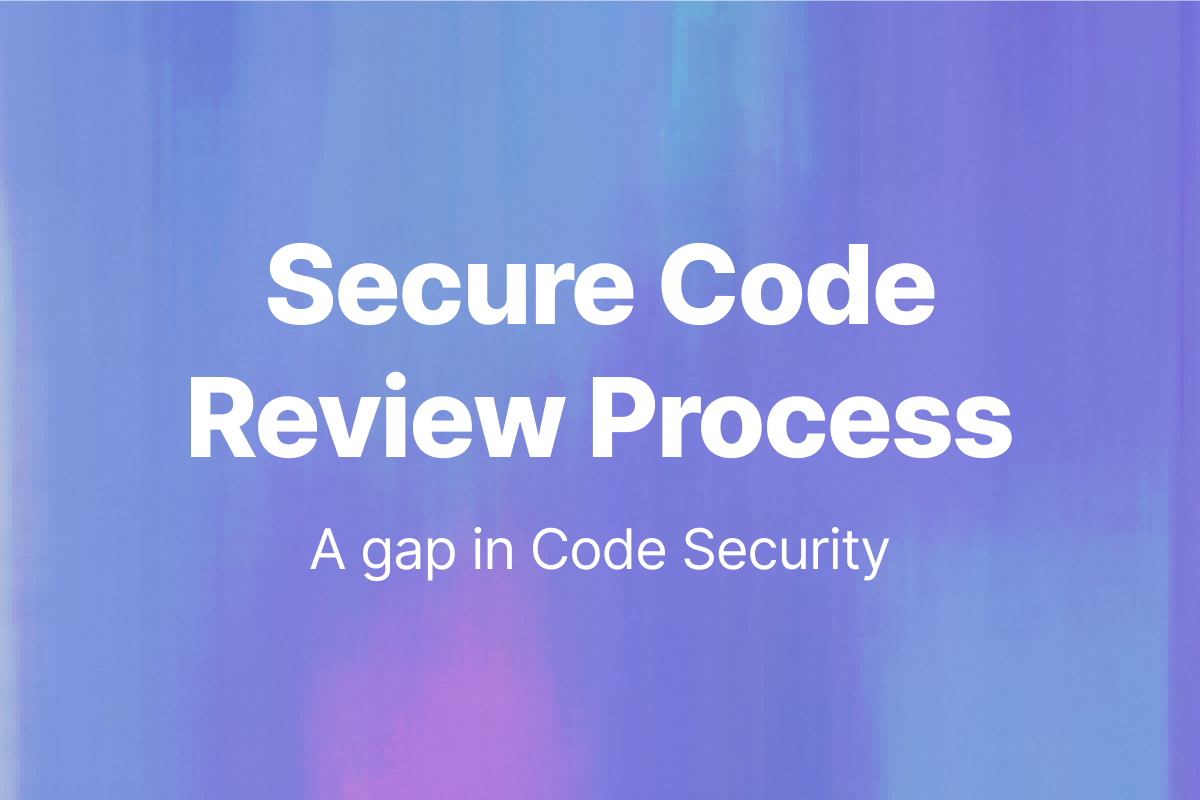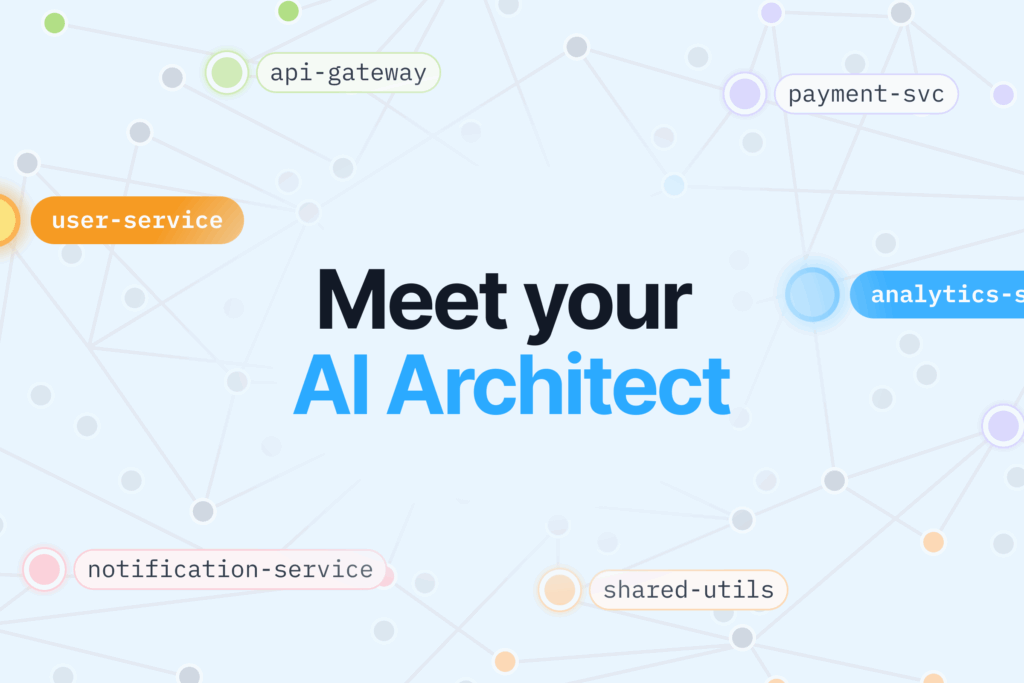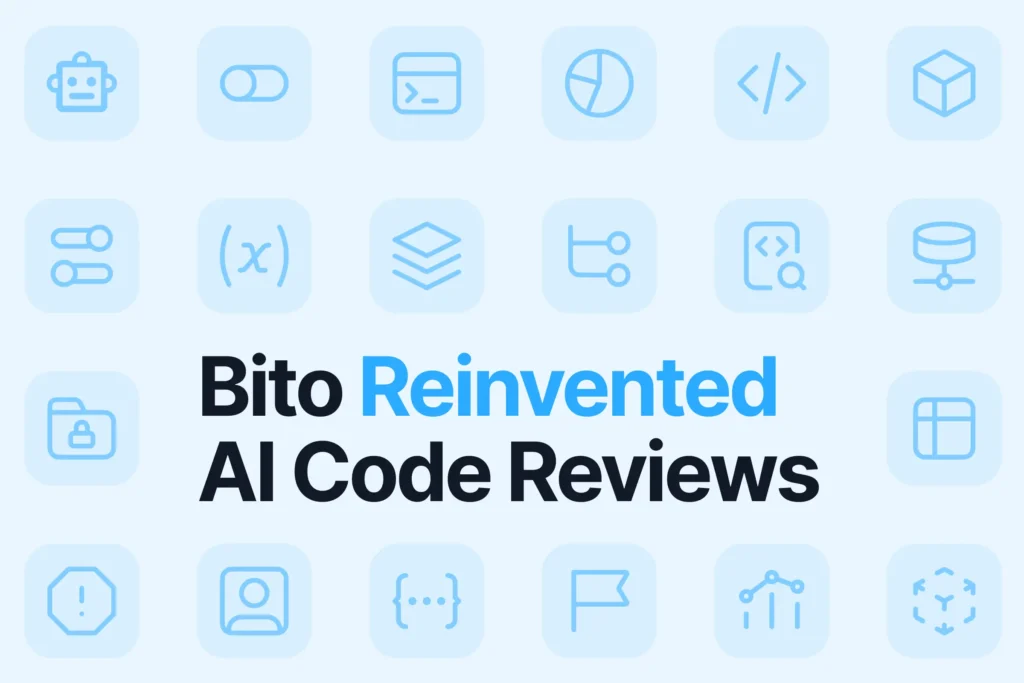Let me set up a disclaimer. When I talk about conducting a secure code review process, I don’t mean to indicate catching security issues in code review. I mean to talk about the security of your source code.
When I started out as a developer in 2021, I thought code review meant catching logic bugs and helping teammates write cleaner code. What I didn’t think about was where that code might end up after the review.
I figured everything stayed in Git or pull request threads, nothing more.
It wasn’t until I started exploring AI-powered tools that I realized how easy it is to lose control of your own source code. Some tools don’t just scan your code. They upload it, store it, and use it to train models. And most of the time, you don’t even know it’s happening.
That’s the real gap in a secure code review process. It’s not just about catching issues in the code. It’s about making sure the code itself doesn’t become the issue by being sent somewhere it shouldn’t be.
This article is about protecting your code while still getting the benefits of AI-assisted code reviews. You don’t have to give up speed or convenience. But you do have to make sure your tools aren’t holding onto your application’s source code.
What is a secure code review?
So what does it actually mean to review code securely?
Most developers think of a code review as a way to catch mistakes, improve logic, or help a teammate write cleaner functions. That was my mindset too, until I realized the review process itself could introduce risk.
A secure code review still does everything a traditional code review does, but with one critical difference: it treats the code as something that needs protection, not just inspection.
This means two things. First, you’re looking for vulnerabilities within the code, like hardcoded secrets, insecure API calls, or unsafe input handling. Second, you’re making sure the code isn’t being mishandled during the review. That includes checking whether tools are uploading it, storing it, or passing it through systems outside your control.
With modern AI-powered tools, this second part is more important than ever. It’s no longer just about what is inside the code. It’s about where the code goes, how it gets processed, and who might have access to it afterward.
Secure code review is about being intentional. It’s not just what you review, it’s how you review it.
This approach is what sets the foundation for a truly secure code review cycle, which we’ll explore next.
What a secure code review process really looks like
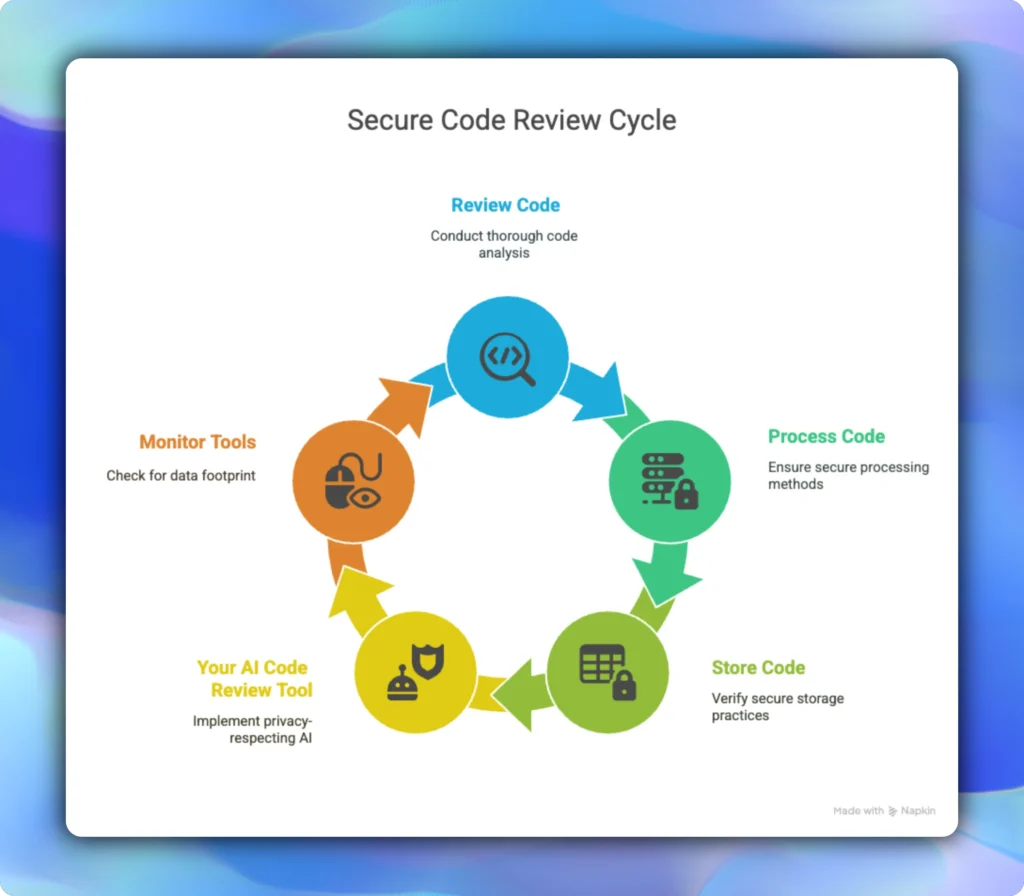
A secure code review is more than just a checklist of issues or code suggestions you have to look at. It’s a way to make sure your application’s source code is protected while you work with it.
That includes how it’s reviewed, where it’s processed, and whether it gets stored anywhere along the way.
If your review process involves AI or other automated tools, that’s fine. I’d say great, even. But only if those tools are designed to respect your privacy. Secure code review means your source code isn’t stored, copied, or passed along to systems you don’t control.
The point isn’t just to improve code quality. It’s to make sure your development team isn’t unknowingly exposing sensitive logic or business-critical data during the review process.
You can follow the best coding practices in the world, but if your tools are archiving every line you submit, that’s a security risk.
Secure code review isn’t only about what tools you use. It’s also about what those tools do with your code, and whether they leave a footprint after you’re done.
Using AI code review tools without giving up your code
The rise of AI code reviewers has been crazy. They are becoming a big part of how developers work.
The global market for these tools was valued at over $900 million in 2023. It is expected to grow by 27.4 percent every year through 2030, according to Grand View Research.
Developers use these tools for good reasons. In the Stack Overflow Developer Survey, 81 percent said AI tools help them be more productive. Over 60 percent said they help with faster learning
Many developers also use them for identifying vulnerabilities early and improving code quality.
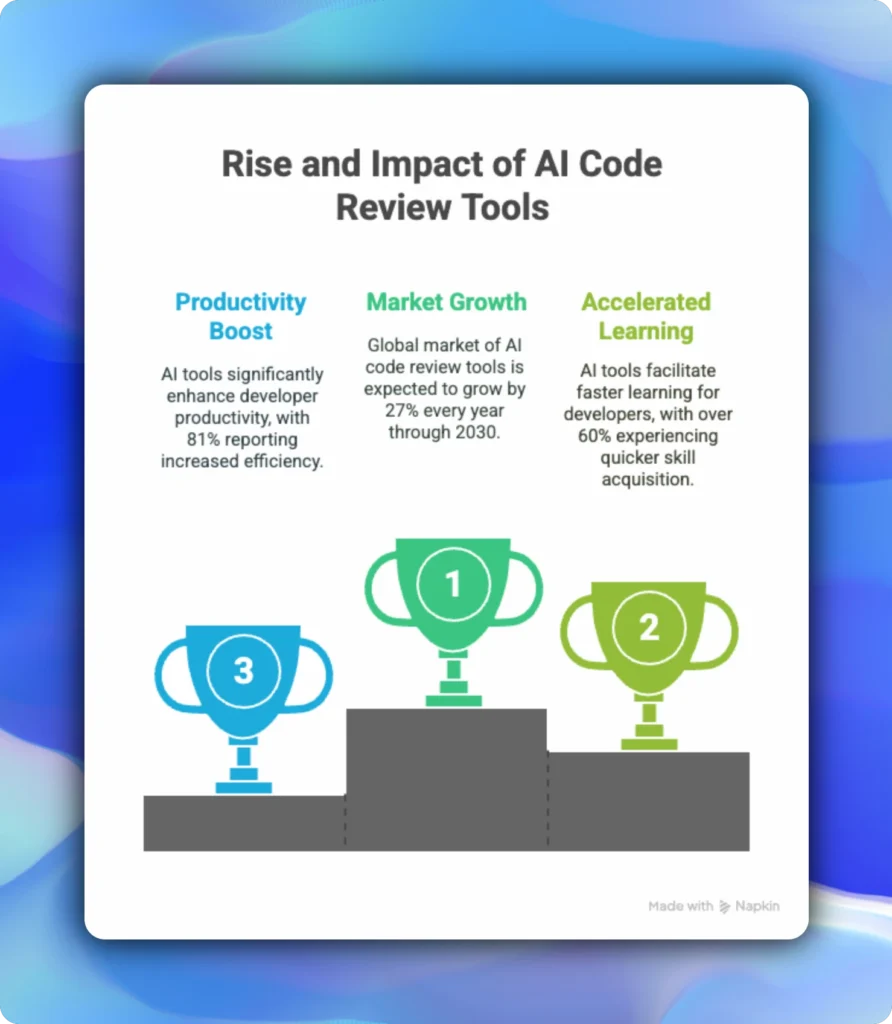
These tools fit right into your workflow. They plug into your IDE, connect to your CI/CD pipeline, and give feedback on every push. Automated code review tools spot complexity, duplication, and code smells. They even track review performance and team efficiency. This helps cut down time spent on debugging and refactoring.
All of that sounds great. But there’s a catch that doesn’t always make it into the feature list.
The part no one talks about
Some AI tools store your code. They upload it to external servers. Some keep it for analytics. Others might use it to train their models. And most of the time, unless you go digging into their docs or policies, you might not even know it’s happening.
That’s a problem for a secure PR review process. You’re not just reviewing code for issues. You also need to make sure your tools are not creating new risks by holding onto your code.
Your source code isn’t just a bunch of files. It might contain sensitive data paths, internal logic, or unreleased features. If that ends up on a server you don’t control, even for a short time, your code is no longer secure.
This doesn’t mean you have to avoid AI tools. It means you have to choose the right ones. The ones that give you real-time help without storing your application’s source code.
That’s how you build a secure code review process that doesn’t compromise your privacy.
Bito’s approach: An AI code review tool with zero code storage
Bito was built with one thing in mind: offer a secure AI code review tool that respects your boundaries. It helps development teams speed up their review process while keeping complete control over their application’s source code.
Nothing gets stored. Nothing is used to train a model. And your review process doesn’t leave behind any security gaps.
In most software development workflows, it’s easy to miss the hidden risks. A lot of automated tools handle your software source code behind the scenes. Some store it, others keep it temporarily. That’s not how secure code review should work.
Privacy by default, not just by policy
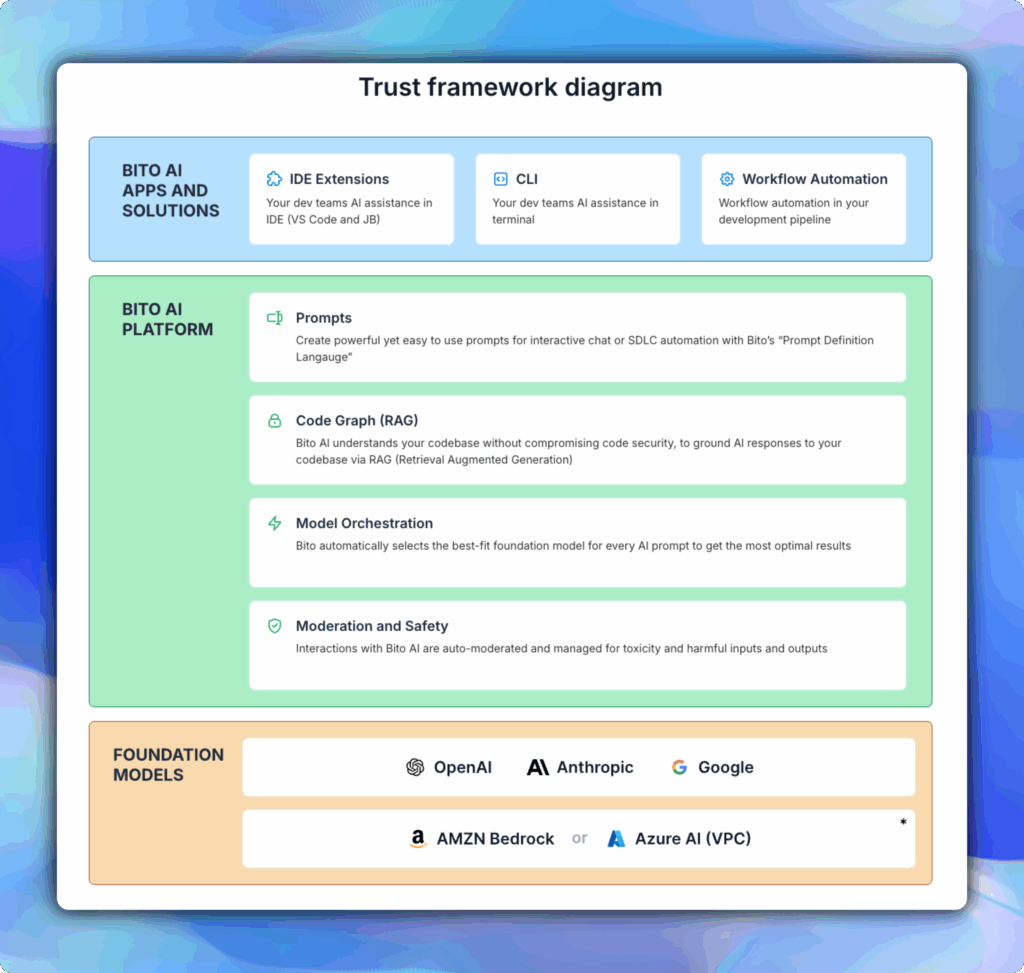
Bito runs inside your IDE and analyzes code in real time. There are no uploads, no logs, and no silent model training happening behind your back. Everything stays local. It also supports static application security testing and works without breaking your development flow.
Security professionals, that we talk to, often appreciate that Bito is SOC 2 Type II certified, with full HTTPS encryption and modern cloud infrastructure.
Even when using services like AWS Bedrock and Azure AI, the models run inside your own VPC. This means your application’s source code never leaves your secure environment.
And it doesn’t just stop there. Bito uses retrieval-based AI, which grounds its suggestions in your codebase without moving that data anywhere else.
This supports secure coding practices, keeps your software development lifecycle clean, and respects code privacy at every step.
A developer tool that understands security
Bito is designed to catch complexity, duplication, and identifying potential security vulnerabilities before they ship. It helps identify issues like SQL injection, cross-site scripting, and other common vulnerabilities without keeping a copy of your code.
That’s real static code analysis that stays in your hands.
If your team relies on manual code review or mixes in automated tools like SAST tools, Bito fits into that hybrid model. It helps reduce false positives and makes both manual review and automated feedback faster and more useful.
The tool doesn’t just check syntax or structure. It looks for deeper patterns and security flaws across your software applications. It helps you improve software quality while sticking to best practices.
And if you’re in charge of the development process, you know how valuable that is.
Benchmark-proven, feature-rich, built for teams
Bito’s AI Code Review Agent offers fast, grounded suggestions for every push. It gives you source code analysis, flags potential threats, and helps avoid known vulnerabilities in real time.
We also publish regularly-updated benchmarks comparing its results with other tools. If you’re evaluating options or trying to upgrade your secure code review process, you can also check out this overview of top AI code review tools.
If you want speed, safety, and smart automation, without losing control of your code, Bito’s the one to build into your stack.
Code security starts with ownership
If you’re using AI tools for code review, you’re already ahead of the game. But if you’re not paying attention to how those tools handle your source code, you might be walking straight into a security risk.
One of your responsibilities as a developer is about protecting your application’s source code throughout the entire review process. That includes making sure nothing gets stored, shared, or reused without your say.
I hope you never see what happens when code leaks or gets exposed in the wrong place. Just know that it’s bad! Whether it’s internal logic, sensitive data paths, or unreleased features, once it’s out, there’s no undo button.
Bito gives you a way to review faster, ship safer, and stay in control. No storage. It performs secure code review that fits into your development workflow and reduce the risk.
Because in the end, writing secure code isn’t enough. You have to review it securely too.
